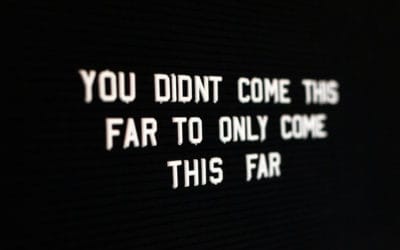Physician burnout that burnout is both prevalent and costly. In fact, it costs as much as $250,000-$1,000,000 per physician who leaves because of burnout. Burnout can also has a deadly associate with physician suicide. As an organization, administrators and executives are ethically bound to help prevent burnout and to produce physician wellness, but in our corporate business climate, it begs the question, does preventing burnout provide a good return on investment? What is the cost of burnout?
The problem and case for wellness
Burnout is a combination of symptoms including increasing exhaustion, depersonalization from people in your life (including patients and staff), and decreasing value in your work and accomplishments. It is extremely prevalent.
In one study, 45.8% of physicians admitted to at least one symptom of burnout
In the same study, they noted that burnout disproportionately affected physicians in “front-line” fields such as emergency medicine (>60% of EM physicians!), internal medicine, and family medicine. Surprisingly, my own field (anesthesiology) was also up there.

From Shanafelt’s study on Burnout in JAMA: October 2012. Burnout as it relates to specialty
These numbers are also substantially higher than the general population. Burnout was found to be 37.9% in the physician population. It is only 23.5% in the general population.
Not only is this problem prevalent, it costs hospitals a lot of money every time a physician leaves. Depending on experience, specialty, and skill of the physician it will cost the hospital anywhere between $250,000 to $1,000,000 to replace a physician lost to burnout.
In addition, there is good evidence that losing any staff member (nurses, nursing assistants, physicians) to burnout that causes a transition to a job somewhere else can increase the burnout in the individuals left behind. This only fuels the flame to burnout leading to more turnover and lost revenue.
What can be done?
Most people view this problem as being impossible to correct. It is an epidemic of the highest proportions. What can a hospital do to fix these problems?
The fact is that the majority of burnout comes from institutional limitations, excess work demands, and a lack of support.
A study published in the Lancet has shown that both institutional and individual-focused interventions can decrease levels of burnout in physicians by about 10%. Examples of institutional based interventions include duty hour requirements and support for clinical based processes. Examples of individualized interventions include mindfulness training, stress management training, and small group discussions.
The ultimate answer in medicine will require a systemic rebuild. Hospital administrators will eventually have to put the people they lead first. Only when they take a systematic view like the airline industry will they be able to fix the systematic problems exist.
Is Preventing Burnout Worth the Cost?
We have established that physician burnout is both common and costly. It affects patients care. It is linked to higher rates of depression and suicide.
There is clearly a moral and ethical imperative to address this problem but every administrator bent on looking at the bottom line wants to know…what is the return on investment for helping produce physician wellness and prevent burnout?
In other words, we know its a problem, but is it cost effective? Or are we just throwing money at something that will never get better?
Thought Experiment for Return on Investment (ROI)
If an organization loses 30 physicians per year, and each physician on average costs the organization $500,000. In one year, that organization would lose $15,000,000 to physician turnover.
Now, you may be thinking that there are a lot of reasons that physicians leave (their extended family lives somewhere else, they find a better job offer, etc), but physician burnout has been linked to physician turnover. In fact, of the 30 physicians that left in the example above, it could be assumed that at least one third of those physicians turned over because of burnout or job dissatisfaction, which would still cost $5,000,000 per year.
That’s a lot of money!
If an organization put in place a $1.5 million intervention in place and decreased that turnover rate due to burnout in half, they would save $2.5 million dollars. Their ROI would be $1,000,000.
In addition to this ROI, there would be some compounded interest on that ROI. It would be found when better work satisfaction is in place. This would lead to better patient care, more academic productivity, and continued decline in burnout.
What can be done?
The first step will require administrator’s to place the people they are leading first. They need to listen to those on the front-lines. Then, they should focus on what is being said.
Maybe it will involve more time for patient care, less required online modules, a scribe to help with the hassle of the electronic medical record system, or more time off. Honestly, the solutions will look different for each hospital.
Either way, the answers should involve conversations with the people who will be impacted.
In fact, an intervention that is not helpful can INCREASE burnout as it is viewed as another form of administrative requirement that must be met. However, a COSTLY but EFFECTIVE intervention may have a much better effect and, therefore, return on investment.
What do you think? Have you seen effective wellness initiatives put in place? Are you burned out? How does burnout and wellness affect your practice?





Here is how my Hospital addressed burnout. Sixteen months ago, they brought in a renowned speaker (in Hospital administration circles) to give an evening lecture on burnout. It was excellent and very well-attended.
There was a panel discussion, which included the CEO of the Hospital, the Chief of Staff, a concierge doctor, and the Chairman of EM. Plans were announced for physician leaders to form a workgroup to address the problem of burnout and provide concrete solutions to prevent it and assist physicians that were currently suffering from it.
I was asked by one of the physician leaders, one who knows my backstory, if I would participate in the panel discussion, and I told him that I was not interested in being in a dog-and-pony show, to be the only one on the panel with a real burnout story, to be a spectacle. But if there is an empowered, meaningful workgroup, to make real plans and recommendations, that I would participate in earnest to help make the lives of my physician colleagues better. He promised to include me.
And then nothing happened. In the ensuing 16 months, there were no workgroup meetings, no solutions, and no assistance. It is as if we “checked the box” for addressing physician burnout and moved on.
That’s brutal, vagabond. Yet, not at all surprising. It’s amazing how much lip service people give, and then they expect those involved to forget they were ever promised what was discussed.
I am often convinced administrators say that they want change, and then never really show it with their actions or examples.
Solutions abound, speakers abound, data on which to base recommendations does not abound. It seems much like the diabetic diet, based on what the guys with big title do only to be abandoned as wrong every four years for 90 years.
Since we depend a lot on anecdotes and mentors when data would be better, we can start with a story. An esteemed Rebbi was approached by a teacher in his school that he was feeling burned out, the term actually used at the time of encounter, late 1990’s. The Rebbi asked what he taught and was told Talmud, 11th grade. Advice: stop teaching Talmud and start teaching 11th graders.
What do we do. We take care of diabetes, we e-sign things, we enter data, we submit our billing. All surrogates for taking care of patients, which is what we should be doing, or at least think we do, though we are distracted.
The statistics with burnout that I see always indicates a large minority but never a majority of physicians. What distinguishes the 60% from the 40% has never been elucidated on a par with things like what makes one diabetic perform better than another. That’s where the research needs to go.
Medicine has been down the well meaning advice many times. Lose weight and your sugar will go down, cheer up and your depression will remit, do yoga and you will handle your professional stresses in a more satisfying way. None of this really happens. But when we target a problem, whether giving insulin to the diabetic or giving ssri’s to the depressed, sure enough the problem remits. There is a solution to burnout. We don’t have a good grasp of what it is yet. The systemic cost may be the best incentive to find out.
I agree that more work must be done to study the problem. Putting bandaids on burnout isn’t going to help fix the problem. And true cures cannot happen until we understand the root cause.